
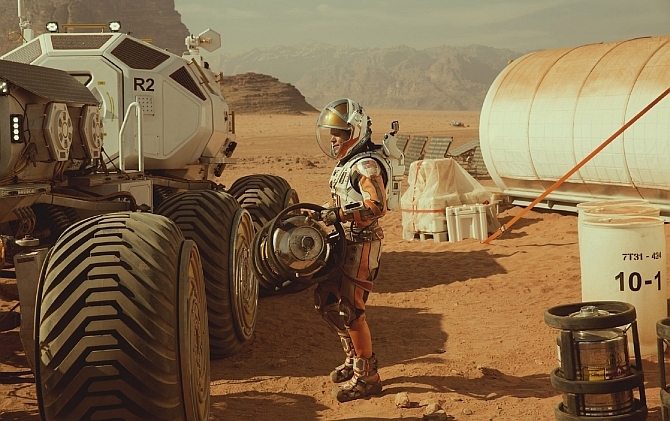
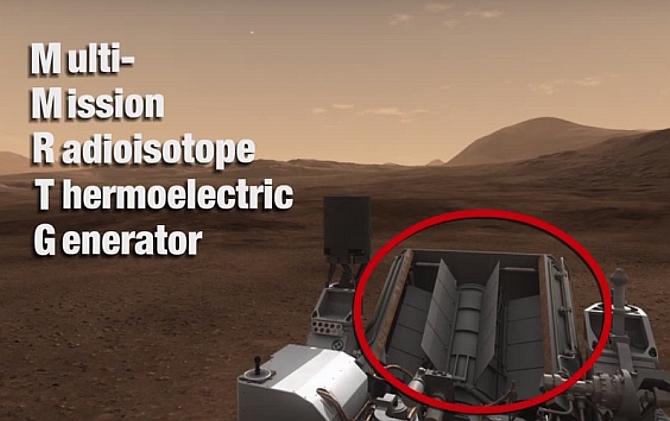
In the movie, astronaut Mark Watney finds a creative solution to stay warm on frigid Mars using a power system called an RTG -- a radioisotope thermoelectric generator -- a "space battery" that converts heat from the natural radioactive decay of plutonium-238 into reliable electrical power.
NASA's Curiosity Mars rover uses just such a power system on Mars today. JPL has for decades led the advancement of materials used to make thermocouples -- the essential components of an RTG that convert heat into electricity. And NASA is working in partnership with the US Department of Energy to develop new materials that could make the next generation of RTGs 25 per cent more efficient than the generator currently being used by the Curiosity.


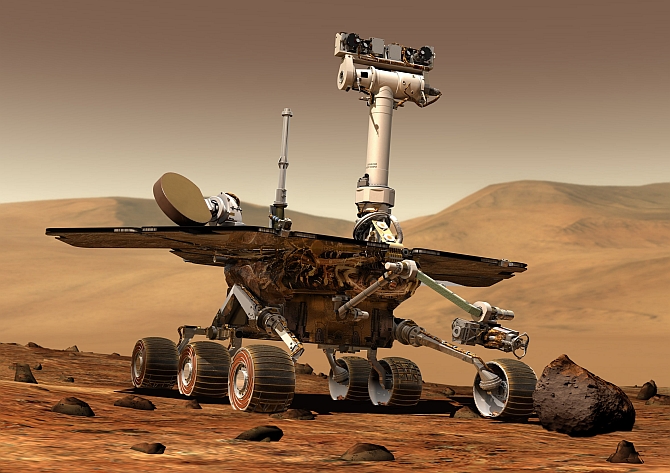
Perhaps most crucial to the story of The Martian, JPL designed, built and operated the Mars Pathfinder lander and its Sojourner rover, which landed on Mars in 1997 and operated for about three months. The hardy Pathfinder probe figures prominently into Watney's ability to communicate with Earth and survive his long ordeal.
One of the technical details The Martian gets right is that, just as in the story, the real Pathfinder had a reprogrammable computer that an astronaut could, in principle, plug into and control.

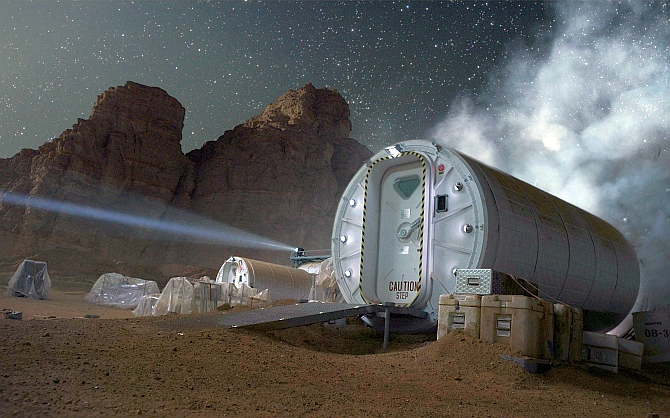

On the surface of Mars, astronaut Mark Watney spends a significant amount of time in the habitation module -- the Hab -- his home away from home. Future astronauts who land on Mars will need such a home to avoid spending their Martian sols lying on the dust in a spacesuit.
At NASA Johnson Space Centre, crews train for long-duration deep space missions in the Human Exploration Research Analog. HERA is a self-contained environment that simulates a deep-space habit. The two-story habitat is complete with living quarters, workspaces, a hygiene module and a simulated airlock. Within the module, test subjects conduct operational tasks, complete payload objectives and live together for 14 days (soon planned to increase to up to 60 days), simulating future missions in the isolated environment.


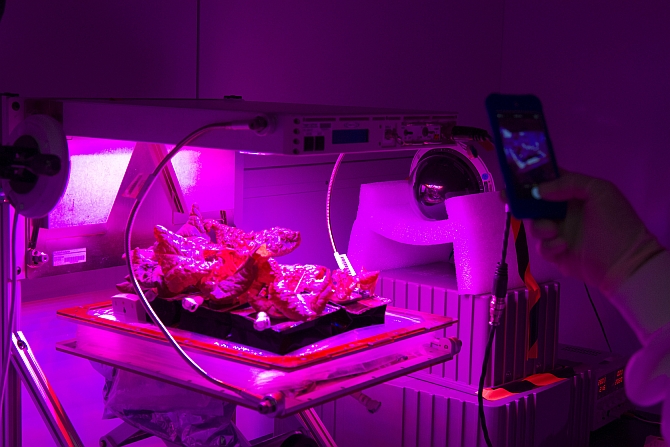
Astronaut Mark Watney turns the Hab into a self-sustaining farm in The Martian, making potatoes the first Martian staple.
Today, in low-Earth orbit, lettuce is the most abundant crop in space. Aboard the International Space Station, Veggie is a deployable fresh-food production system. Using red, blue, and green lights, Veggie helps plants grow in pillows, small bags with a wicking surface containing media and fertilizer, to be harvested by astronauts. In 2014, astronauts used the system to grow "Outredgeous" red romaine lettuce and just recently sampled this space-grown crop for the first time



In The Martian, Astronaut Mark Watney can't just step outside for a breath of fresh air to survive, he has to carry his own supply of oxygen everywhere he goes. But first he has to make it. In his Hab he uses the 'oxygenator', a system that generates oxygen using the carbon dioxide from the MAV (Mars Ascent Vehicle) fuel generator.
On the International Space Station, the astronauts and cosmonauts have the Oxygen Generation System, which reprocesses the atmosphere of the spacecraft to continuously provide breathable air efficiently and sustainably. The system produces oxygen through a process called electrolysis, which splits water molecules into their component oxygen and hydrogen atoms. The oxygen is released into the atmosphere, while the hydrogen is either discarded into space or fed into the Sabatier System, which creates water from the remaining byproducts in the station's atmosphere.

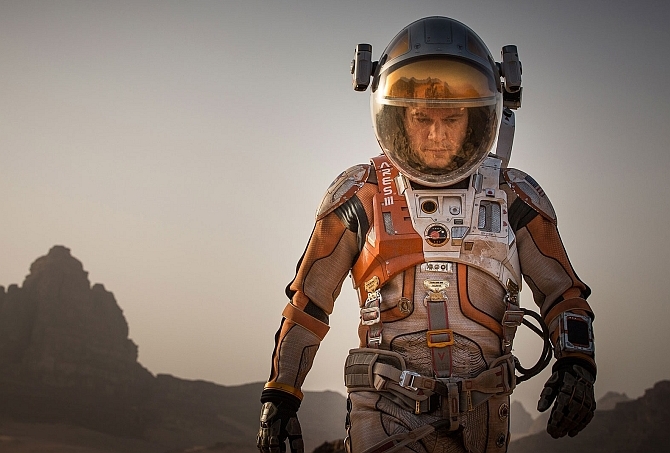

Astronaut Mark Watney spends large portions of his Martian sols (a sol is a Martian day) working in a spacesuit. He ends up having to perform some long treks on the surface, so his suit has to be flexible, comfortable, and reliable.
NASA is currently developing the technologies to build a spacesuit that would be used on Mars. Engineers consider everything from traversing the Martian landscape to picking up rock samples. The Z-2 and Prototype eXploration Suit, NASA's new prototype spacesuits, help solve unique problems to advance new technologies that will one day be used in a suit worn by the first humans to set foot on Mars. Each suit is meant to identify different technology gaps - features a spacesuit may be missing - to complete a mission.


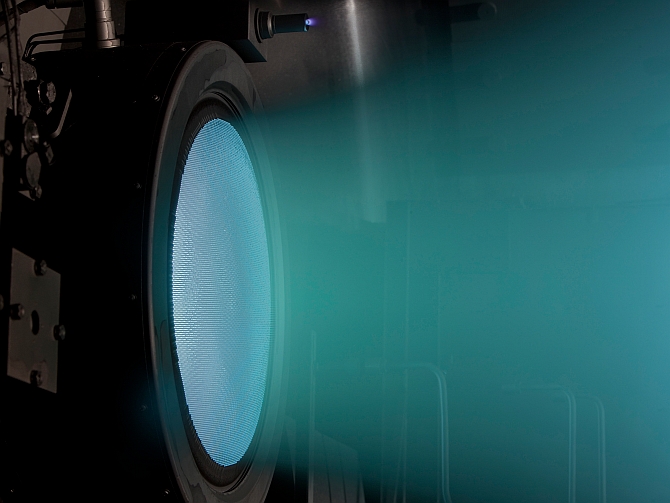
In The Martian, the Ares 3 crew lives aboard the Hermes spacecraft for months as they travel to and from the Red Planet, using ion propulsion as an efficient method of traversing through space for over 280 million miles. Ion propulsion works by electrically charging a gas such as argon or xenon and pushing out the ions at high speeds, about 200,000 mph. Ion propulsion also allows the spacecraft to change its orbit multiple times, then break away and head for another distant world.
This technology allows modern day spacecraft like NASA's Dawn Spacecraft to minimize fuel consumption and perform some crazy maneuvers. Dawn has completed more than five years of continuous acceleration for a total velocity change around 25,000 mph, more than any spacecraft has accomplished on its own propulsion system.

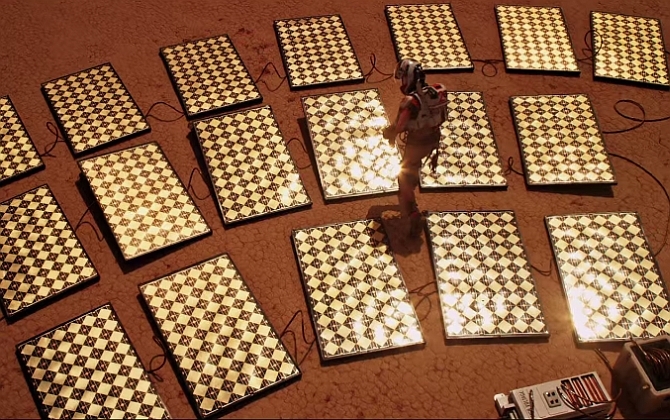

There are no gas stations on Mars. No power plants. Virtually no wind. When it comes to human missions to the Red Planet, solar energy can get the astronauts far. The Hermes spacecraft in The Martian uses solar arrays for power, and Mark Watney has to use solar panels in some unconventional ways to survive on Mars.
On the International Space Station, four sets of solar arrays generate 84 to 120 kilowatts of electricity -- enough to power more than 40 homes. The solar power system aboard the space station is very reliable, and has been providing power safely to the station since its first crew in 2000. Orion, NASA's spacecraft that will take humans farther than they've ever gone before, will use solar arrays for power in future missions.

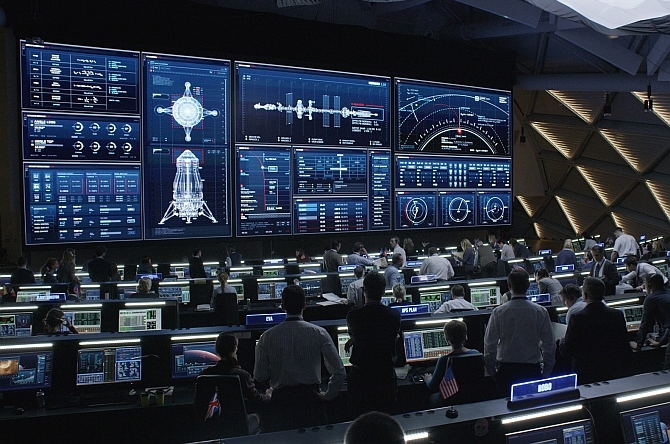
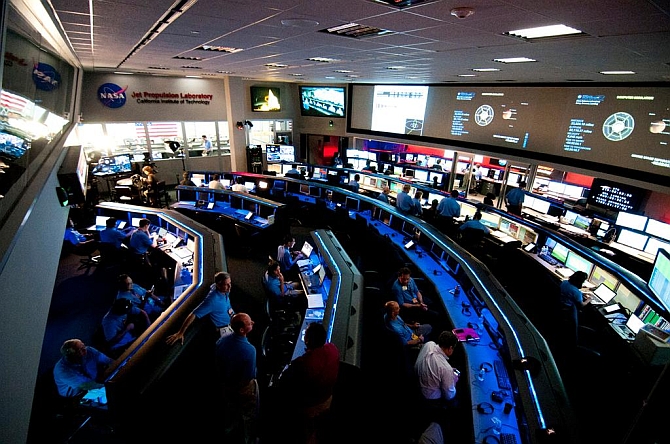
The Martian also captures the famous can-do attitude of JPL engineers, who dive headlong into the challenge of helping communicate with the stranded astronaut and later, launching supplies to help keep him alive. NASA's celebrated ingenuity is on display in the navigator who comes up with the solution for how to bring the entire Ares crew home.
Since the beginning of the Space Age, NASA has been the world leader in deep space navigation -- from being first to conduct gravity assists around other planets to today's daredevil flybys of Saturn and its moons by Cassini.